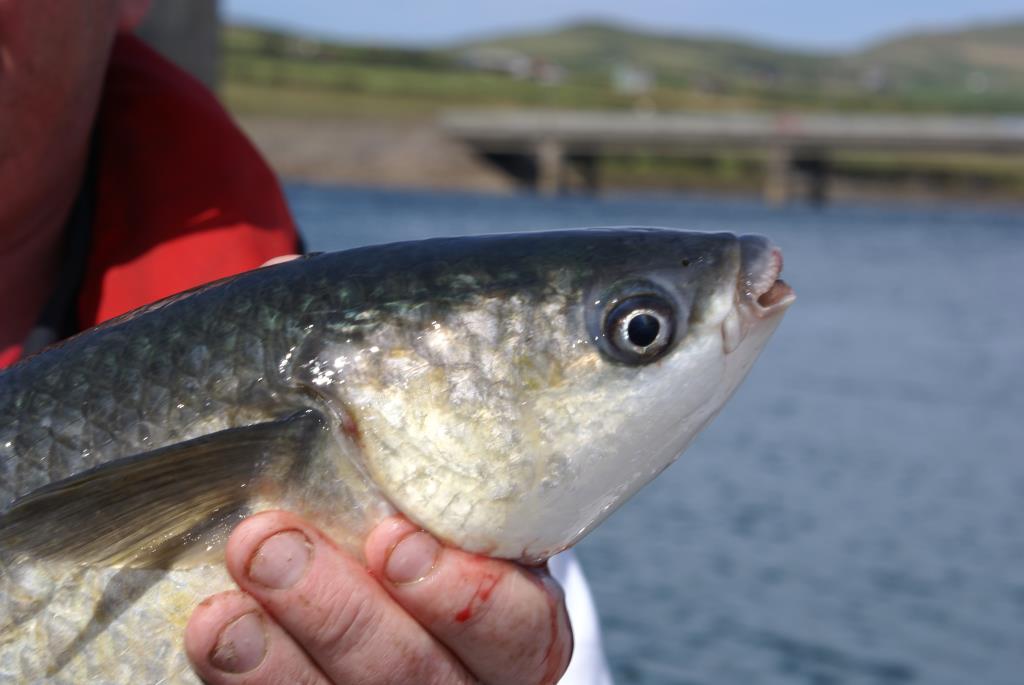It might be from 2009 - but this article still holds up for help in targeting the elusive Golden Grey mullet.

Golden Greys!
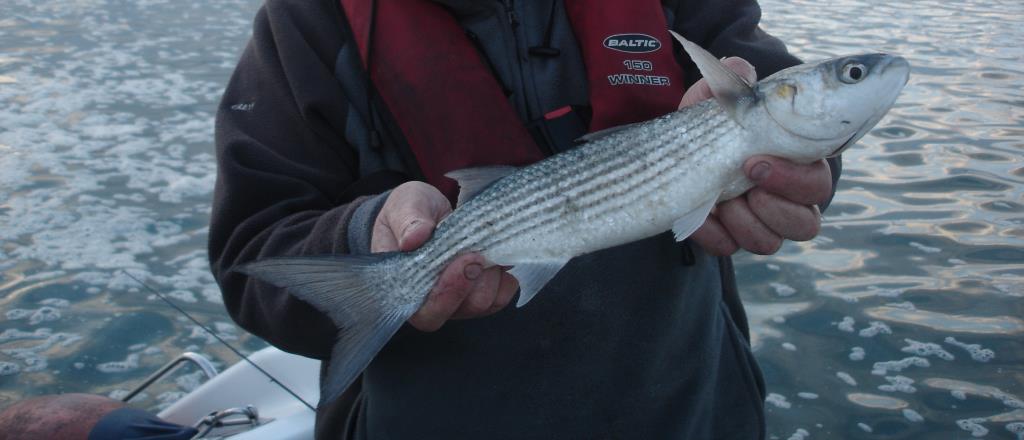
A specimen Golden Grey
Jim Clohessy is a sucker for a challenge. New fish on the block golden grey mullet have been driving him mad – until recently! [Edit 2016: This article first appeared in Irish Angler in 2009]
I will always remember my first golden grey mullet, a flukey fish really, caught while spinning for bass early in 2002. It caused some consternation for us at the time as we struggled to identify the fish. The excellent “Irish Sport Fish – a Guide to their Identification” proved inconclusive as it reckoned that Golden Grey mullet were not recorded in Ireland. You couldn’t fault book as it was originally published before the arrival of a few new species into our waters. In those days gilthead bream were a rarity, trigger fish were elusive. In a changed landscape (should that be waterscape!) these new species give the dinghy angler looking for a change of scene something new to chase, something new to ponder during bad weather and the winter time.
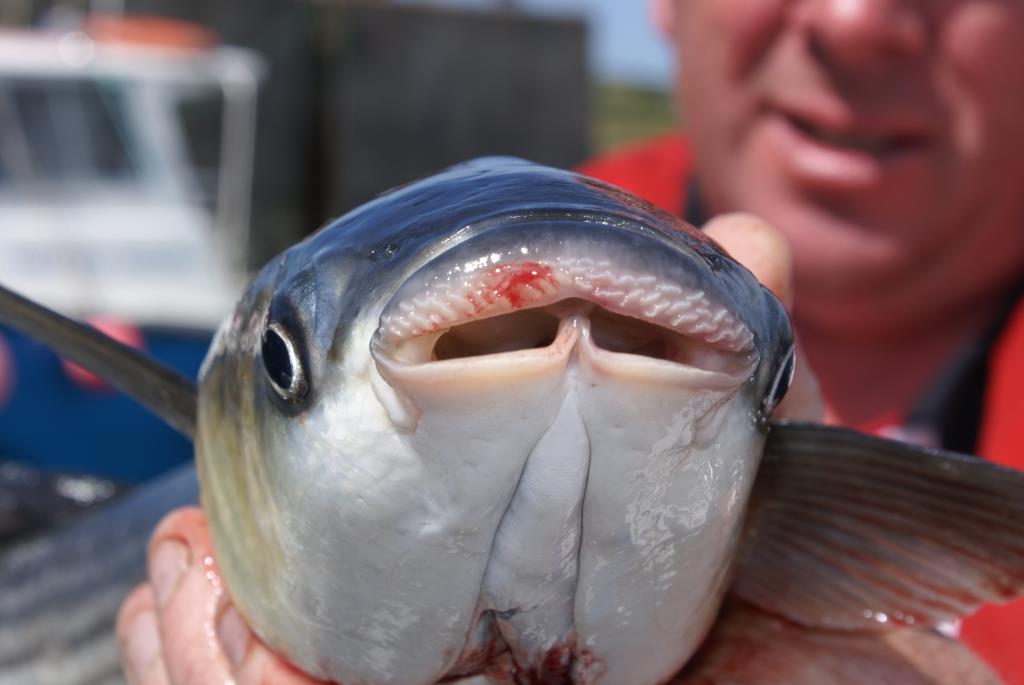
There are differences between the Grey & Golden Grey
It was a couple of years ago that we turned our attention back to golden grey mullet. We began to see them more and more regularly while we were fishing for bass and greys. They are similar to their cousins the grey mullet but have somewhat different habits. They tend to shoal more and they seem more intent to hold up off the shore line rather than rooting around the high water mark. At times they seem absolutely brainless jumping and leaping out of the water for no apparent reason. There were few sources of information on golden greys. We tapped into the knowledge base that is the Lane brothers from Cork. Noel Lane holds the Irish record for golden grey mullet and the intrepid specimen hunters were partly the reason the fish was added to the Irish Specimen Fish Committee’s list of specimen fish, the Lanes were the only people catching them and reporting them!
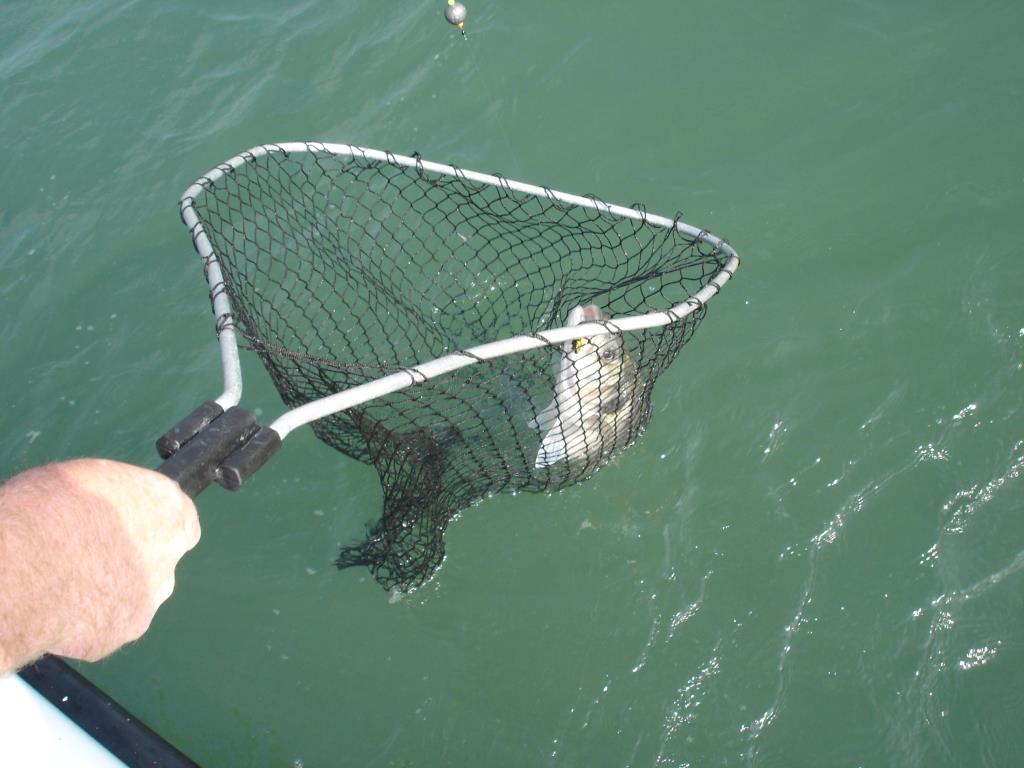
We read reports of golden greys being caught regularly from beaches in Wales and at another stage I saw a programme featuring the UK’s John Wilson in which he targeted golden greys from a south UK harbour. The common denominator was the bait – ragworm is king; no batch loaf here! The Welsh anglers free-lined small ragworm on surf beaches. Wilson used a small modified Mepps spinner tipped with maddies. We set about planning our assault but as luck would have it before we could catch with confidence the fish disappeared as the weather got colder. We would have to wait to try again and be driven demented over the winter thinking of tactics until this year again.
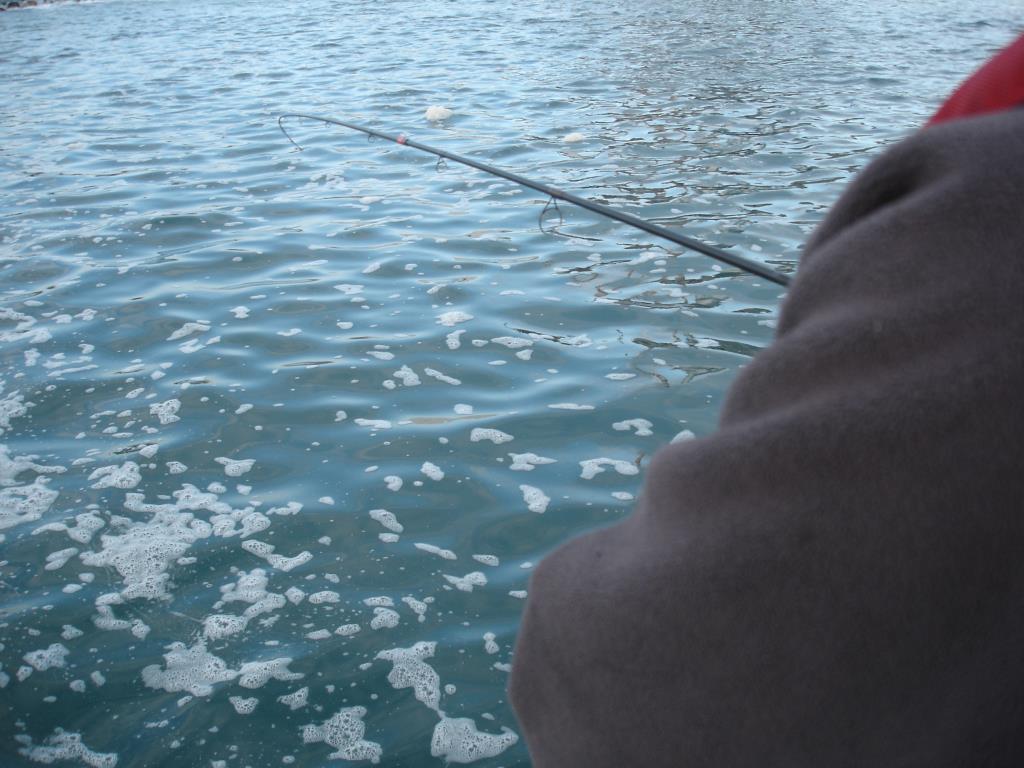
Calm conditions!
As the weather improved and water temperatures increased the mullet arrived back from whatever they do wherever they do it in the winter. We spent a deal of time studying the shoals from the shore before deciding that the time and weather were right to launch SKUA. Our first few attempts were frustrating with only a few small fish to speak of. We spent a good deal of time trying different tactics. Free lining was not very successful, it was just too hard to get the bait away from the boat before it sank. We did not have the benefit of crashing waves to help our presentation. I tried float fishing, a tactic that is deadly for grey mullet. Even while using the lightest fluorocarbon the fish seemed more intent on jumping around the line and nosing the float. That was until we began to draw the bait slowly back to the boat; suddenly the fish were more interested and the wiggling ragworm teased the fish into biting. Biting was one thing striking the hook home was another. We tried using tiny baited sabiki style rigs, tipped with ragworm, retrieved slowly through the area – There were plenty plucks but the strike tended to result in a foul hooked fish, hard to tell whether this was down to the amount of fish chasing the bait or the nature of the way the mullet attacks the bait. Dawn and dusk tended to yield better fishing. The fish seem to shoal up even more at that time.
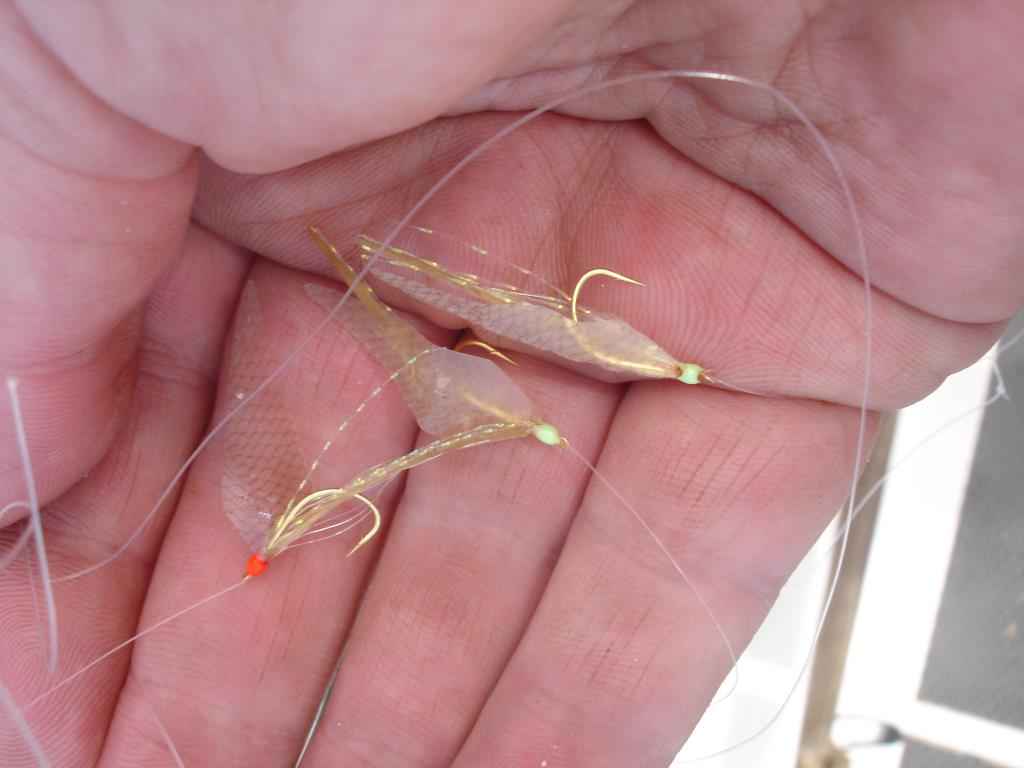
Little Hayabusa Sabikis
We spent the early part of the summer keeping an eye on the likely golden grey holding spots. As soon as the fish would appear on station we sprung into action. We dug small harbour ragworm, readied our assortment of tackle and pointed SKUA in the general direction. We spent trip after trip being frustrated with little to show for our efforts. We tried ground baiting to no great effect. Then on one trip, when there were plenty fish around, they switched on. As simple as that it was a frenzy of fishing! Almost every cast yielded a fish. I think it was more to timing, tide and conditions more than any particular angling skill. We spent our time alternating between using tiny sabikis and float rigs. Hooks were size six or smaller and
all leaders were of fluorocarbon. I was using a light Berkeley series one spinning rod. My Jaxon VX Machine was loaded with 20lb braid. Initially I was not sure about the braid as I felt I was striking too soon, I could feel every little pluck on the line. However I reckon that in many cases a lone fish would just pluck the tail of the ragworm whereas when there was competition between fish the bite would be more positive. Once the fish was hooked the braid was out on its own as every head shake and lunge was transmitted directly to my heart via the rod! The session yielded a good few specimen fish to both of us but you could feel that where golden greys are concerned we had only won a skirmish not the battle and not near the war.
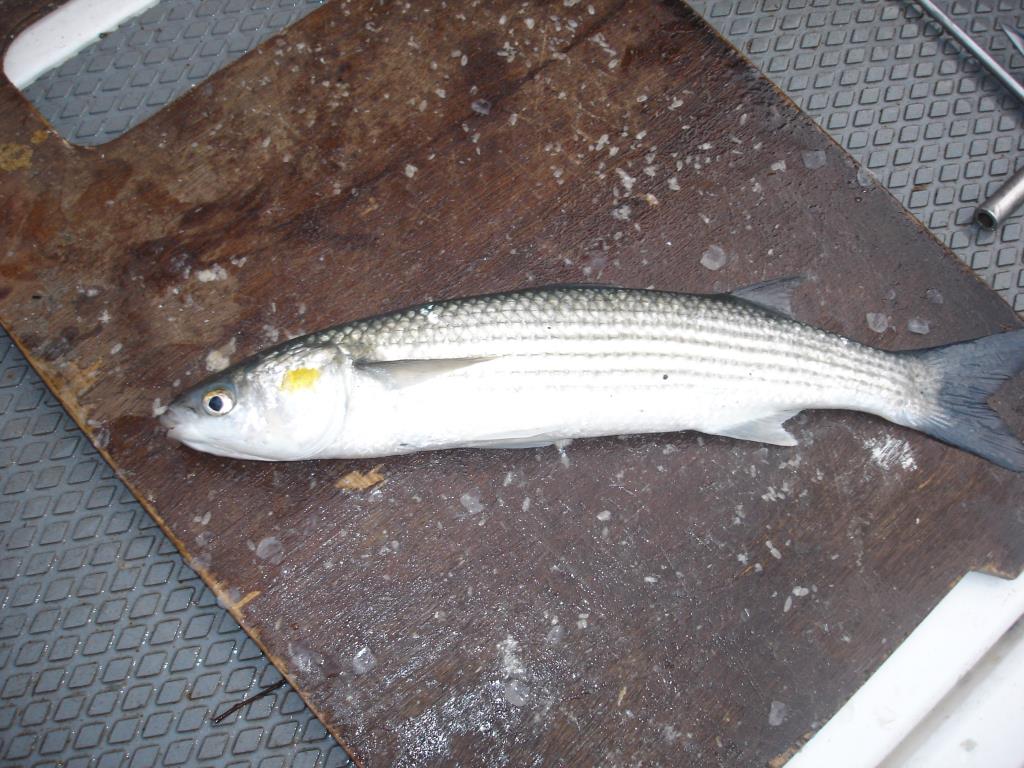
These are not a huge species of fish, but closer inspection shows a tail that appears to be out of proportion with the body, it is huge. The fish uses this huge paddle to put up an incredible scrap. The water is shallow so the fish has no option but to run away from the boat. Just when you think you have the better of the fish and you place the net in the water be prepared for another burst of speed away from or in some cases under the boat. We were fishing at anchor and a couple of times the fish ran around the anchor rope such were the force of the runs. We had little choice but to leave the fish run as the strength of the fish would soon snap 6lb fluorocarbon.
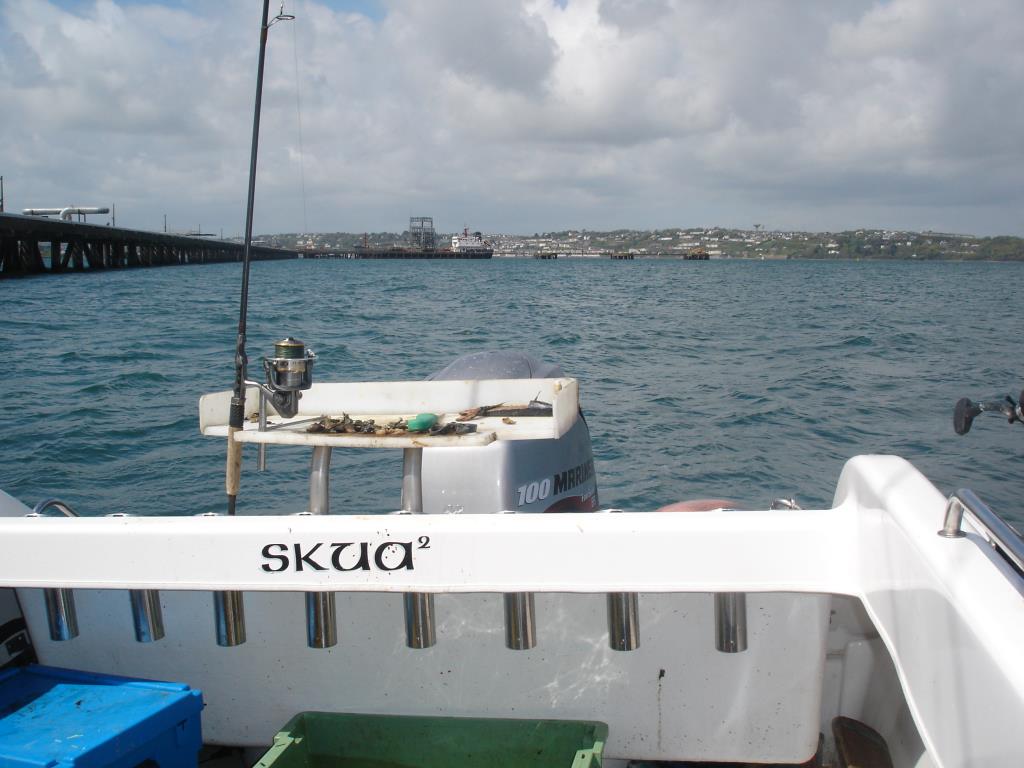
As said already Golden Greys are not a big fish. A specimen fish is not a huge fish in grey mullet standards. In fact a fish of a pound and a half in old money, .68 kg, makes the standard. The Irish record fish is only just over two and a half pounds. The major difficulty is in the identification of the fish. The first giveaway is the golden spot located behind the gill plates. This mark is very pronounced on smaller fish but can be faded on bigger specimens. The gillplates at the underside of the head are a dead giveaway as the grey mullets’ gill plates are parallel when closed whereas the golden grey are curved giving a pronounced “jugular interspace”. Despite the confusion the IFSC are happy with good quality photographs so there is no need to keep the fish if you do not want to. It should be pointed out that the photos need to be clear showing the underside of the head, a frontal shot of the lips as well as the usual side profiles.
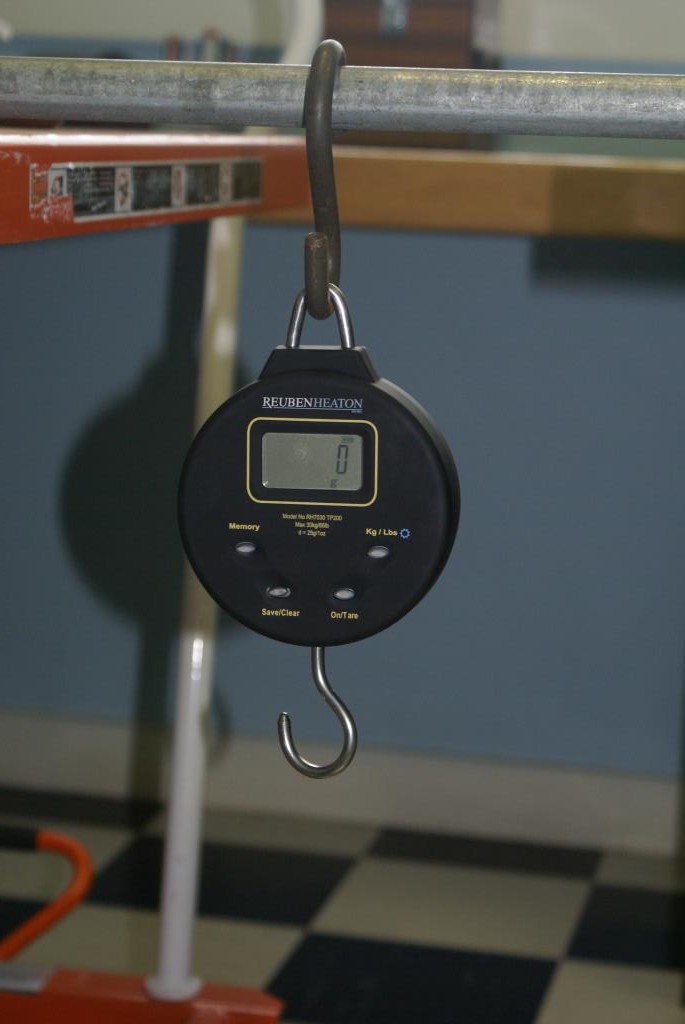
Over the last few articles we spoke about having the right safety equipment on board. We also discussed the need for a broad range of tackle. An area that we did not touch on was measuring equipment. Every skipper should have onboard: A measuring stick, a camera, a seamstress’s tape measure, weighing scales, a weighing sling and the current list of specimen weights (available from the IFSC website) A couple of fish identification books are also a useful addition to you kit as well. The Collins Gem book of Sea fishes is no longer in print though you might pick one up online. The Central Fisheries ID book is available for free download from www.cfb.ie and is a must for all anglers. You might not be a dedicated specimen hunter but it is still great to be able to identify your catch and also to weigh your fish and you just never know when the fish of a lifetime might just arrive.
At this stage we have two weighing scales on the go: A Salter Electro Sampson and a Rueben Heaton 7000 series. We purchased the Rueben Heaton after one of our Salter’s died. We decided on the Ruben Heaton for a change because it was a tough scales designed with anglers in mind. Apart from being waterproof and shockproof it has all the qualities of a high quality digital scales. To go down the official route you will need to have your scales certified as accurate. This is simply a matter of handing your scales into your local Legal Metrology Office. It is best to ring beforehand as they normally have a specific day on which they check out anglers’ scales. Each year I ring the Cork office and usually head out on a Wednesday to get the scales done. Last time out I asked to see the process and it was interesting. I went from the reception area into a temperature controlled environment. The office takes its job very seriously as they have to certify scales for all businesses where weight is the measure of sale as well as dealing with taximeters and fluid measurement. We headed for a lab where the certification process would begin. Around the wall of the lab were hardwood cases containing sets of weights. Each weight set is given a category of accuracy and in many cases a human hand cannot handle the weights without special gloves. The slightest contamination of the weights can render them out of calibration. Our Rueben Heaton was taken to a test rig and the procedure began. Weights of various known sizes were hung from the scales and the readings were noted. The process was repeated a couple of time over a range of weights up to the scales maximum. Our scales passed with flying colours and it was noted to be very accurate across its full range.
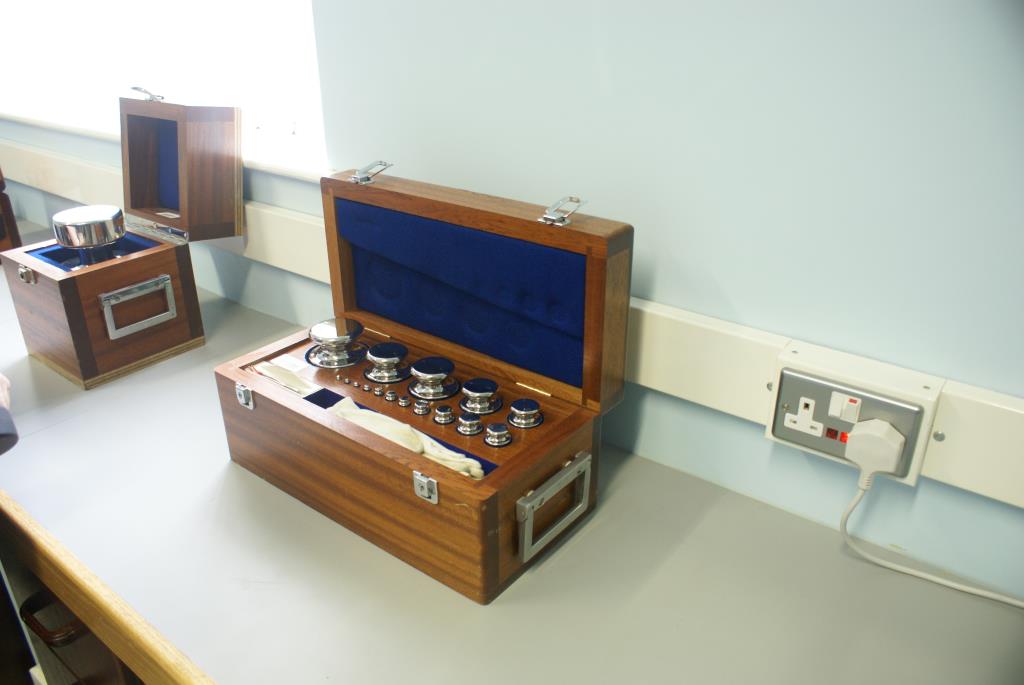
Scales are compared to a set of calibration weights
With the tests done we chatted about angling scales and the problems that occur with them. It would appear that analogue spring balances can deteriorate quickly if the spring gets rusty. So a digital scales is most accurate but is there a difference between a relatively cheap scales and a more expensive one? Not normally when the scale is new out of the box. The problems arise over the next few years of certification. The popular scales on the higher price range such as the 7000 series or the Electro Sampson will pass certification year after year without problems. Many of the cheap scales loose accuracy if not treated gently. The people in the Legal Metrology Office will only certify your scales. They will not calibrate your scales for you. If the scales pass they issue you with a certificate if the scales fail they hand it back without a cert. I am almost afraid to mention that the service is free of charge lest some minister is reading and decides that a charge of €500 should be levied! [2016 Edit: Recession hastened the demise of the free certification Legal Metrology now want €50. Many anglers are using local scales providers to certify more reasonably]
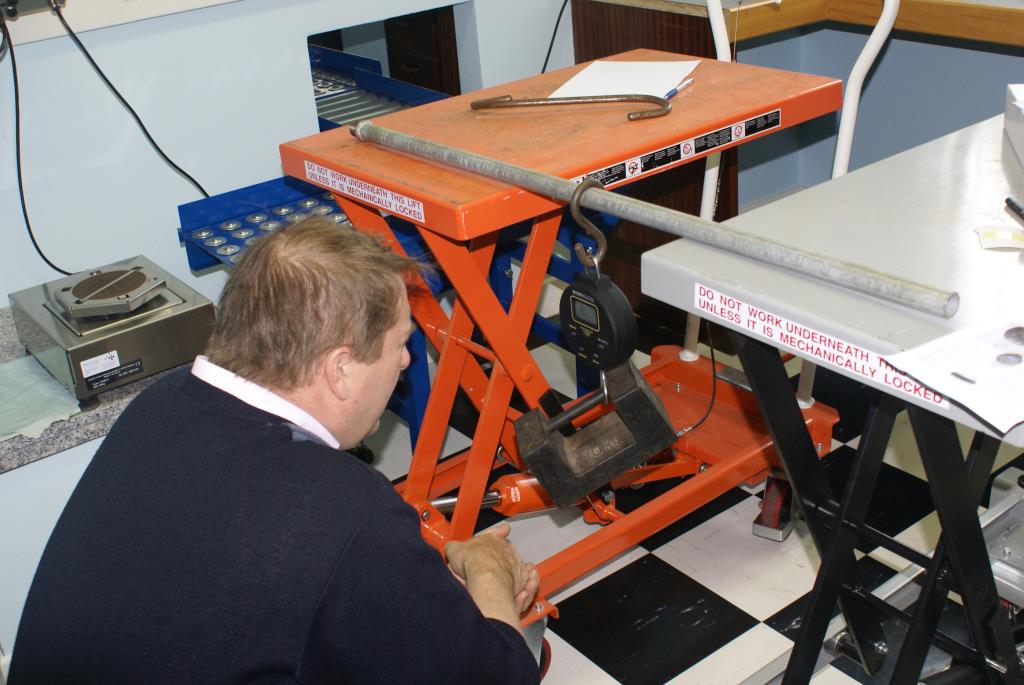
The test in progress
Having a certified scales means most specimen fish can be dealt with on the shoreline and released immediately if that is your wish. While the IFSC have a list of some species where they require a body, photographs of good quality will do instead provided that the identification of the fish may be made without any doubt. An example of this was a recent claim for a red gurnard. The fish was weighed on land and photographed and released. The red gurnard has a distinctive lateral line and once the photos showed this feature and the pectoral fins extended, to rule out a tub gurnard, the identification was simple, no need for a body. The same can be said of bass, a properly equipped shore or boat angler can catch a specimen, weigh, measure and photograph the fish and claim a specimen while sending the fish back to fight another day. Obviously the fact of having to weigh a fish on land can restrict the boat angler but many have ingenious set ups for keeping fish alive for running to shore to get the weighing done. Where we can we target fish in places where a run to shore is possible.
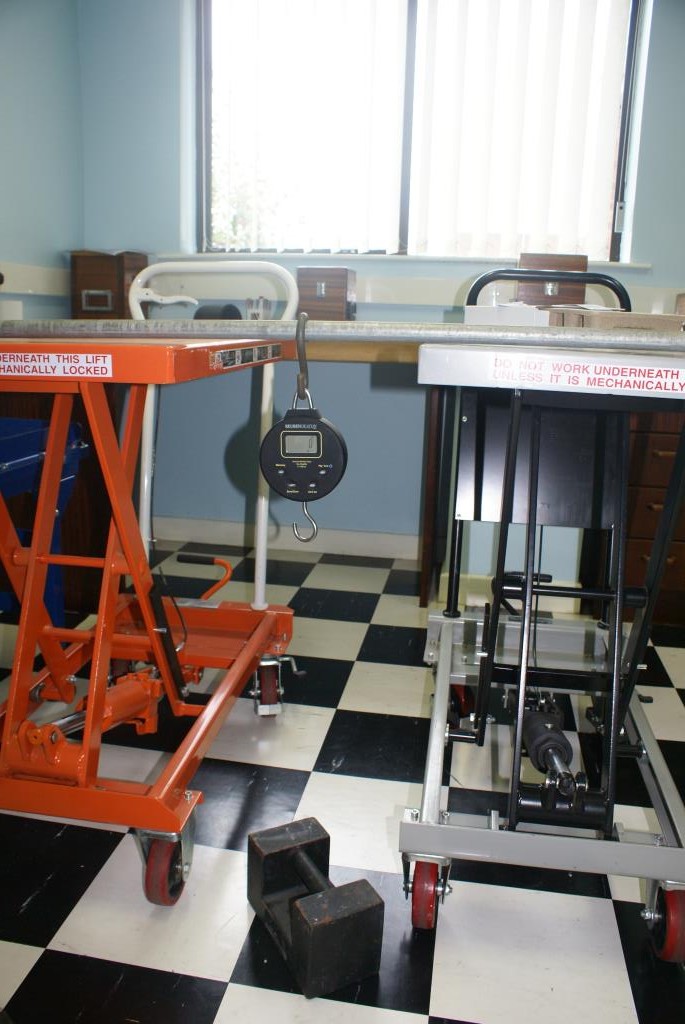
I will always remember the comment by Brian Cooke, a well known Dublin specimen hunter, he said something like: “There definitely are less big fish around now that it is so easy to capture them on film!”. Some superstitious anglers feel carrying a camera puts the hex on them, a bit like carrying a bag to bring some fish home! Forget about it! Most people have a camera on their phones in any case so a compact digital camera will hardly diminish returns. It is a super tool to capture great memories and should be a fixture on the boat.
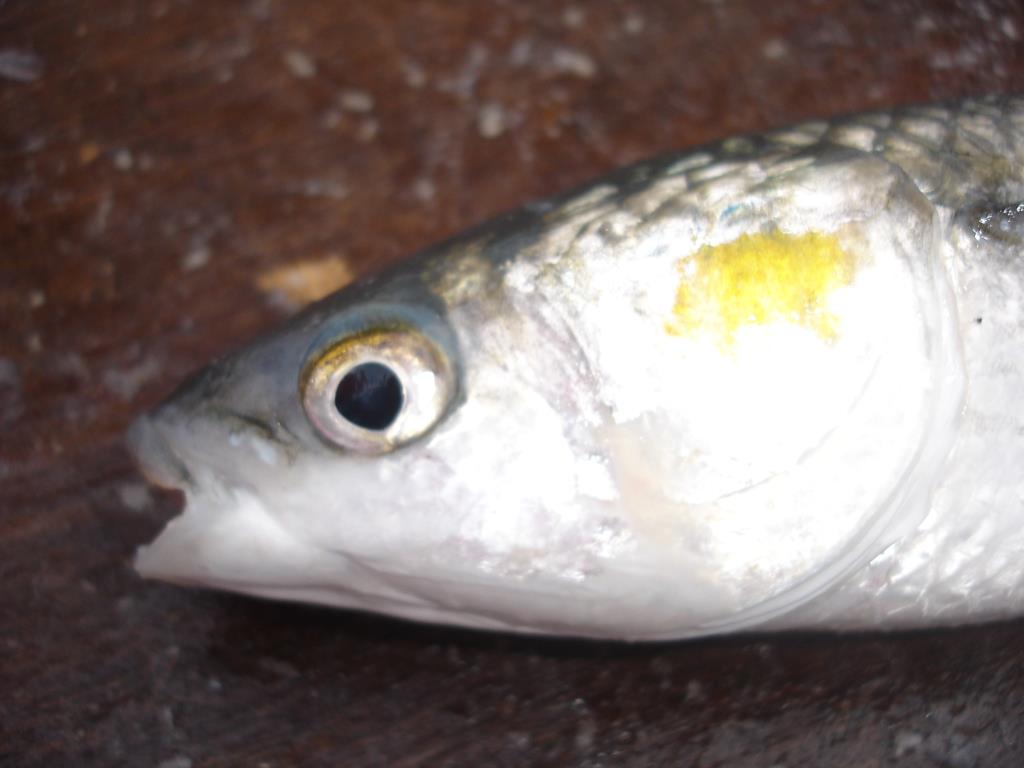
Some fish make you rise to the challenge of trying to land a specimen. Some species can bring out obsessive traits in the most normal of anglers. Some species, once the milestone is achieved, are largely forgotten about as the result may not justify the quest. Golden grey mullet are an amazing little fish. The chase will be frustrating; you may have to catch many fish before landing the fish you are looking for but each fish will give you a fight that you will not forget easily. Just when you think you have them mastered they will manage to confound you again and again. I suppose that is why we go fishing, to experience more of the highs and lows that make our sport great.
